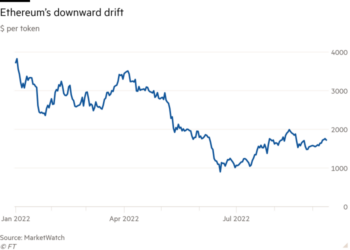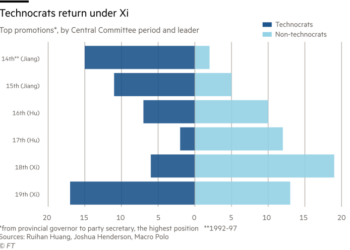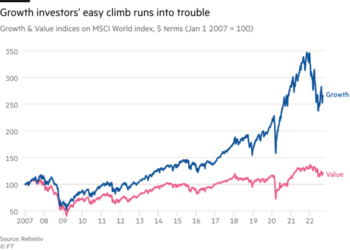The only time I ever heard an air raid siren was at school in the 1980s. It seemed they were testing the system, which worked perfectly and which I never heard again. Culturally, we were in an odd moment of nuclear awareness: readers were captivated by John le Carré’s cold war dramas; women were encamped at Greenham Common, bound together in their campaign for nuclear disarmament and peace. Television programming was liberal and expansive: well, someone, somewhere considered us emotionally strong enough to cope with Threads. A one-off BBC drama by Barry Hines (the laureate of working-class experience), it depicts the outcome of a nuclear attack on a Nato base near Sheffield, and aired in 1984. Tagline: “The closest you’ll ever want to come to a nuclear war.”
A sense of Orwellian gloom was in the ascendant: even cuddly old Raymond Briggs of The Snowman was making an animated feature, When the Wind Blows, about an elderly couple following a “protect and survive” manual in the wake of a nuclear attack. You thought a bit of snow melt was traumatic? Oh, and then came the Chernobyl meltdown.
Only one generation removed from global conflict, society was arguably more robust then. Europe was yet to bounce into the soft blancmange of ’90s “peacetime”, unions were striking, cash was tight. Ignorant as to the real potential for a nuclear disaster, I turned to my father for some advice: “Do you think we might be irradiated in a nuclear explosion?”
Leaning to a school of parenting based only on fact-based verification, his answer was terrifying: “I suppose we might be,” he shrugged after some consideration. “The truth is: I don’t know.”
My father wasn’t one to soft-soap a conversation. If you were looking for reassurance, he was the very worst person to ask. For months afterwards, I lay awake at night listening for tell-tale sirens, or unexpected plane sounds. I imagined and catastrophised, and felt really, really scared.
Of course, in my childhood, and somewhat lively imagination, I really had no grasp of the geopolitics at play. But when you’ve watched a woman’s face melt in a BBC war drama, and your parents are both realists, there weren’t really many avenues to find the cuddly answers that I wanted. I had it lucky: our cultural reckoning with nuclear war was still largely fiction, we weren’t being taught how to survive a nuclear attack, as my mother’s generation was, by hiding behind a mattress or crouching underneath a table. By the mid-1980s, we had moved on to the realisation that our futures were in no way sorted.
And now the sleeping unease that accompanied my childhood has been rudely reawakened. We’re all a bit like children at the moment, hoping desperately for someone to say something nice and positive. Listening to a BBC interview last week in which a Russian analyst with close ties to Vladimir Putin suggested the president was definitely insane enough to push the button, I decided it was time to be more selective with my media. Much as I want to engage with every nuance of this conflict, the real drive in all my doom-scrolling is to find those crumbs of optimism that tell me: “it’s going to be OK.”
What do we talk about when we don’t talk about the end of the world? I’m not sure I want to hear the honest and researched answers. I don’t want to hear from people with deep insights into the Kremlin. Or some grave-faced war correspondent on the news. Instead I’m reaching for the cheery propaganda footage showing tanks mired in muddy puddles, or reports on news stories about how Russia has misunderestimated things. I’m addicted to TikTok accounts that show the astonishing humour and tenacity of Ukrainians, of little children singing Frozen’s “Let it Go” in their basements, or teenagers like @valerissh who shares films of her shelled home town in Chernihiv but sets them to hip-hop tracks and cheeky social media memes.
For all the ills of fake news and the spread of misrepresentation, the soupy, convoluted world of social media can be a tremendous source of solace. While news teams broadcast their statesmanlike professionals, on TikTok you find soul-soaring humanity: the basement bakery still producing buns for Ukrainian soldiers, the Russians protesting silently by walking around Red Square.
Yes, there are wormholes — scrolling over simulated nuclear attacks on European cities is possibly not the best way to spend the final minutes before bedtime — but the war on TikTok can offer an illuminating portrait of the very best in human kindness. Plus, it’s short on pity. @Valerissh isn’t catastrophising: she’s not worrying about nuclear fallout, or what Putin’s going to do next. She’s too busy joking about the manky offerings at the supermarket (coconut water from the Maldives, and a sprinkle-covered doughnut) — or showing us how her mother cooks blinchiki in their basement. I wonder if she realises to what extent she’s reassuring the whole world with her pragmatic bravery and humour. And how I wish I’d known her when I was eight years old.
Email Jo at jo.ellison@ft.com
Follow @ftweekend on Twitter to find out about our latest stories first











